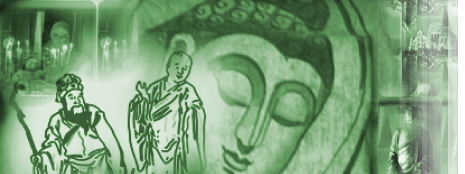
![]()
IMAGINING HOLINESS |
ERRATUM A significant translation error crept into a story in my book and is corrected here. It will be fixed in the electronic edition and any future printings. In the selection of stories at the beginning of the book, the story titled “The Butcher’s Blessing” should be “The Polish Nobleman’s Blessing”. This story thus fits a pattern in which hasidic storytellers take pride in rebbes’ connections with gentile aristocrats. The mistranslated word is the Yiddish shlyakhtsits (in the otherwise Hebrew text of the story). Frustratingly, I had the correct translation, from a Slavic root, in my notes, but in the hurly-burly of preparing the book for publication, an earlier conjecture based on a connection with German schlachten found its way into the text. Here is the corrected text of the story and my introductory notes, pages 21-22 of Imagining Holiness: The Polish Nobleman’s Blessing Source: Michelson, Dover Shalom no. 73
This story about Rebbe Shalom of Belz (1779-1855, progenitor of the Belz dynasty which remains significant in Hasidism today) is relevant to discussions later in this book about the use of talmudic material in stories, and the holiness of the rebbe’s body. Attitudes toward non-Jews in hasidic stories are multifaceted, including but not limited to hostile dismissiveness. The story right before this one in Dover Shalom proudly depicts a gentile nobleman asking R’ Shalom to heal his insane son; R’ Shalom does so by arranging things so that the dybbuk (possessing spirit) causing the son’s insanity is transferred to a Christian priest. The rebbe explains that the dybbuk is the soul of a deceased Jewish woman who had been that priest’s mistress. In this story, another aristocratic gentile seeks the rebbe’s help. The rebbe will not touch him, reflecting a world-view which associates gentiles with impurity, but will extend help to him – on condition that he will help Jews. Later in the story the rebbe attempts to keep two of his hasidim from travelling; when they travel anyway, they get lost in a blizzard. Presumably the rebbe foresaw this but did not explicitly warn them about it. This kind of veiled advice or warning is a recurrent theme in hasidic tales; it reinforces the aura of mystery surrounding rebbes and the importance of following their advice even without knowing why.
Another time, a Polish nobleman came to the rebbe, sick throughout his body and limbs, heaven protect us. He lay motionless, and could not move a single limb. Now, the way of the holy rebbe was that when a Jew came to him with an ailment in any limb, he would run his holy hand over the spot that was ailing, and handle it, until it was healed. But he did not want his holy hand to touch an “uncircumcised,” and he told his servant, R’ Elimelech, to take his handkerchief and run it over the whole body and arms and legs of the sick man, and so he did. The sick man said that he felt something like a wind leaving his whole body by way of his feet. After that, the holy rebbe told him to try to sit up, and he sat up. After that he told him to try to get down from the wagon and walk around the wagon, and he did. Then the rebbe told him that the rest of his healing would happen in his house, as long as he promised to be good to Jews, and he promised him. Fifteen years later, a man and his future son-in-law were visiting the holy rebbe to receive his blessing before the wedding, and they stayed in Belz for the holy Sabbath. After the Sabbath, it was not long before the wedding and there were many preparations to take care of at home, but the rebbe held back his parting blessing until Tuesday, until the man came to him with his future son-in-law, complaining – why was he holding them back? Each moment was like a day to them, because they had to make their preparations, and on the coming Sabbath the young man would be called to the Torah in honour of his upcoming wedding. The rebbe answered, “I wanted to hold you back, but if you want, go on your way in peace,” and so they did. On the road, as they were travelling at night through a great forest, a great, powerful storm arose – this was in the winter month of Shevat. In the forest was a deep pit, and because of the blizzard, what was crooked appeared straight, and they drove into the pit, and there they stayed and could not go any further, because the snow was very deep. So they admitted how completely correct the righteous man was when he wanted to hold them back from travelling, but what happened had happened, and what now? They cried out to the Eternal from inside the pit, and suddenly there came to them that Polish nobleman with his relatives and friends, in wagons with horses, and pulled them out of the pit and took them home and warmed them up. He told them that the holy Rebbe of Belz had woken him up to make him keep his promise from back then, to be good to Jews. And even though to begin with he did not obey him, the rebbe would not let him sleep and he saw him standing beside him, and so he hurried to help and rescue them. |
|
CONTACT Justin_Lewis@umanitoba.ca (204) 474-8696
|
Imagining Holiness